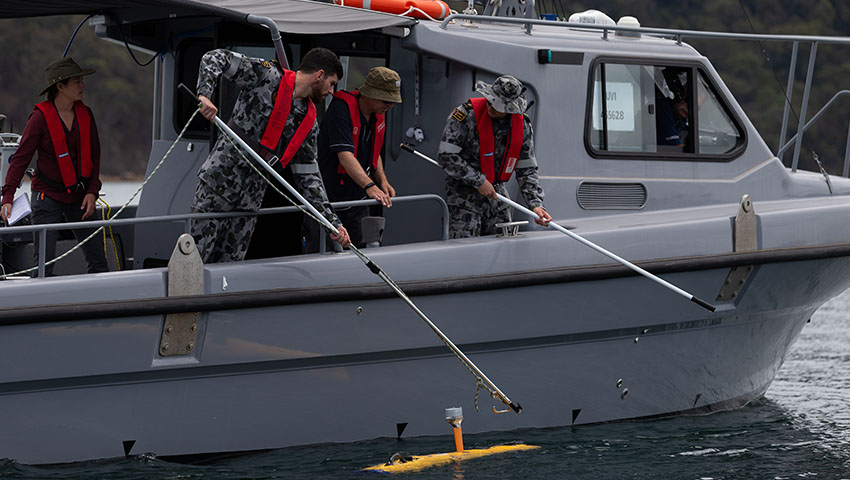The Royal Australian Navy’s growing fleet of unmanned and autonomous mine-hunting equipment is increasing in capability as the platforms get smarter and the fleet adapts to using the platforms.
To continue reading the rest of this article, please log in.
Create free account to get unlimited news articles and more!
Whether providing a bird’s eye view of the battlefield or searching the ocean for mines, it’s well known robotic systems are ideally suited to dull, dirty and dangerous jobs.
The operator of an uninhabited aerial vehicle can remotely control a drone using radio or satellite communications. However, communicating through water is more difficult, driving a need to incorporate a greater degree of autonomy in uninhabited underwater vehicles (UUVs).
There are a range of technological solutions that can be used to seek out mines in the ocean, but Navy primarily relies on sonar.
As it moves through the water, a sonar device sends out pulses of sound and listens for echoes to bounce back. From this data, sonar produces acoustically generated images that should reveal any mines that might be lurking on the seabed.
Defence scientist Dr Phil Chapple has developed software that processes sonar imagery automatically detecting any objects of interest.
Known as SonarDetect, the software can be used to carry out post-mission analysis, including processing data all at once after it has been collected. But the software can also work in real time as a sonar-equipped UUV moves around the ocean.
"These robotic vehicles are normally programmed to follow certain fixed paths. They will cover an area of the seabed and go backwards and forwards to cover an area and provide images of all of the seabed," Dr Chapple explained.
Dr Chapple added, "Those images are sent back for analysis later by the naval operator but we are trying to make that more autonomous so vehicles can respond immediately if they see something of interest."
Once it detects something, the vehicle might pause its predetermined search pattern to take a closer look at the object, capturing images from different angles to help identification.
The UUV might return to the surface and alert the operator of what it has found, and to await instructions.
Dr Chapple said robotic vehicles were not intended to replace naval personnel but envisaged UUVs being deployed as part of a team to enhance Navy’s mine countermeasures capability.
"We’re trying to build in autonomy because it will enhance the ability of the naval operator to conduct a mission. If they can send out robotic vehicles, trust what they’re going to do and rely on them to come back safely then that will be a force multiplier going forward," Dr Chapple added.

 Login
Login







